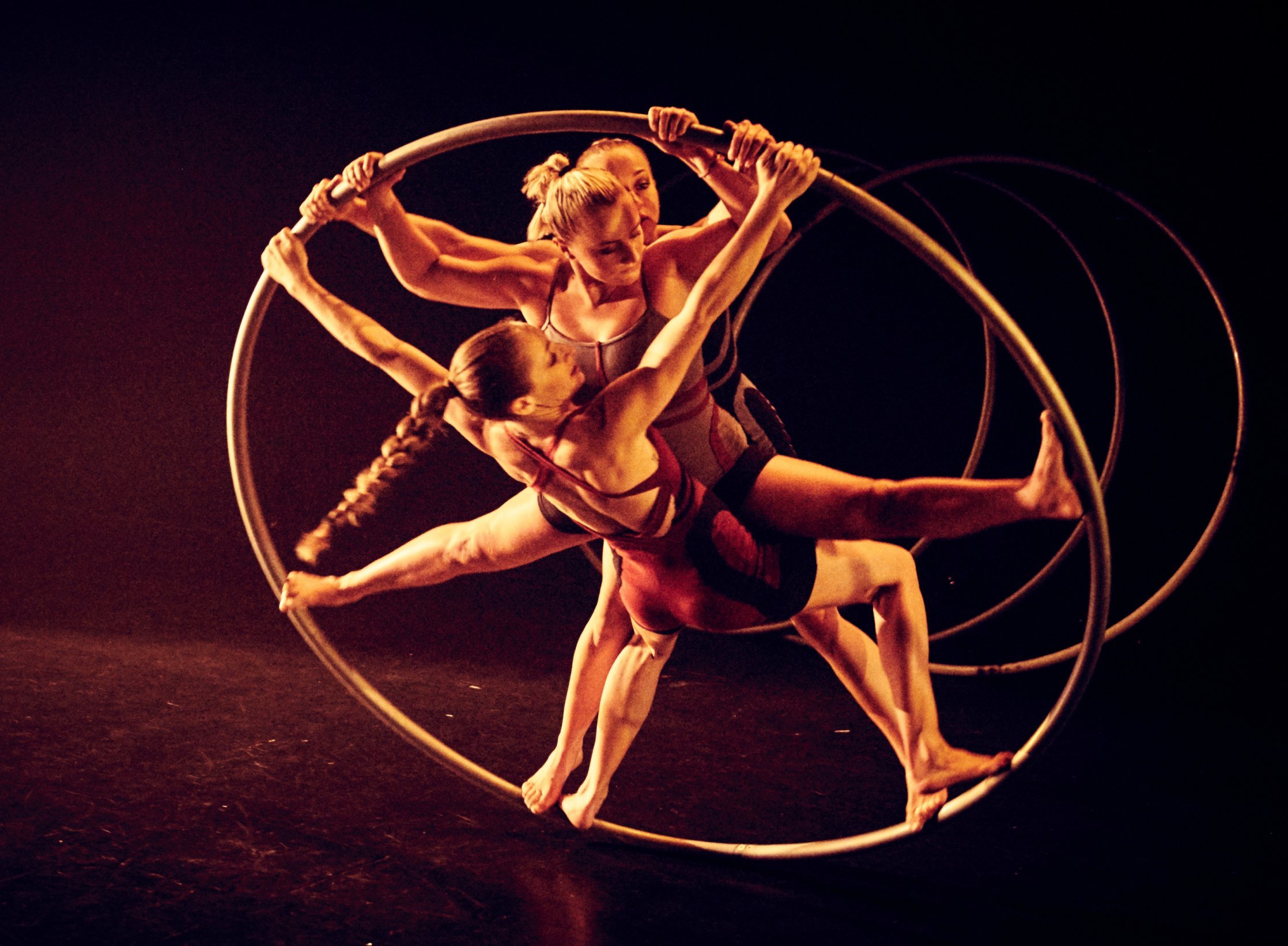
Hyena, part of CircusFest 2018
Photo: Mark Dawson
How to… produce circus shows
As circus becomes ever more daring and dangerous, Molly Nicholson reveals the challenges of producing it.
Circus has been on a steep trajectory, developing rapidly for many years. CircusFest, the biennial festival I’m producing at the Roundhouse, concentrates on the contemporary circus sector, but this growth is true across the whole sector.
There is a lot that has had a positive impact on this growth, including a larger touring network, a growing appetite from audiences and increased investment from Arts Council England. But most importantly, the ambition of the artists and independent companies within it has been the main driver.
Artists are putting their lives at risk, with the trust that someone on stage will literally catch them if something goes wrong
Looking at the work of UK-based companies we are seeing the lines between circus and theatre blur. Companies such as Nikki and JD, and Gandini Juggling, are pushing the relationship between circus and dance, while other companies like Acrojou and Remy Archer are taking huge steps in collaborating and integrating new technology into circus.
Working on a bigger scale
So circus is becoming broader and artists are pushing the boundaries, pushing themselves creatively and intellectually. They are also pushing themselves physically as they develop more dangerous tricks.
A large part of my job as a producer is to facilitate this, to support this growth creatively and logistically, alongside developing audiences and audience expectations. In terms of creating new work, there are some difficulties that are particular to the artform.
As the ambition grows, not only does the possibility of scale increase (we’re seeing more UK companies moving into the large scale), but also the more complex technical aspects, that together result in more inventive and progressive shows.
This growth in scale brings with it various challenges, particularly the space and finances available to create the work, as well as the suitability of venues.
There are very few places that are equipped to train and rehearse circus, with the required floor space and rigging possibilities. Because of the height needed, companies often rehearse in warehouses which can be very cold. Some brilliant spaces (Jacksons Lane in north London, The Point in Eastleigh and Invisible Circus) do their best to offer as much space as possible but more is needed.
When touring you negotiate specific touring needs. If the shows contain aerial work, it takes trained riggers to make sure all elements are rigged safely and efficiently. Often the performers do this themselves but this is taxing on their body, especially if they are rigging and performing on the same day.
Risk and tricks
When producing a festival such as CircusFest, these technical and logistical needs are amplified. We have seven shows at the Roundhouse, all with their individual quirks. The production manager takes care of all of this and makes everything happen, and it helps that she comes from a circus background.
Taking care of the technical needs is important because circus is so risky. Risk is at the heart of the artform – as is trust. Artists are putting their lives at risk, with the trust that someone on stage will literally catch them if something goes wrong. That trust on stage doesn’t go unnoticed by audiences – you can see the strong relationships between performers which ultimately improves the quality of the show.
However, things can go wrong and as a producer I have to be ready for the worst-case scenario. If a performer gets injured I need to have a plan B. Sometimes that will be a replacement, although an unrehearsed replacement can be as dangerous as an injured performer. At other times we’ve had to cancel the show. We have insurance, and can sometimes put on a replacement show, to lessen the blow but it requires resilience to call it and bear the potential loss.
Risk is interesting in terms of audience expectations. You want the large-scale shows with the big tricks that wow audiences. However, circus is growing to become more than just the tricks.
One show this year at CircusFest – No Show by Ellie Dubois – doesn’t have the nail-biting, aerial tricks you may expect from the artform. But circus is still the foundation of the show, as it reveals the real life of a circus artist, injuries and all. That’s what makes it interesting, whether that be a theatre or a circus show.
As we continue to challenge the sector on how we can facilitate thrilling and relevant new circus, we need to fiercely push and protect the diversification of circus. That includes encouraging innovative social circus and making it more international.
Molly Nicholson is Circus Producer at the Roundhouse.
www.roundhouse.org.uk
Join the Discussion
You must be logged in to post a comment.